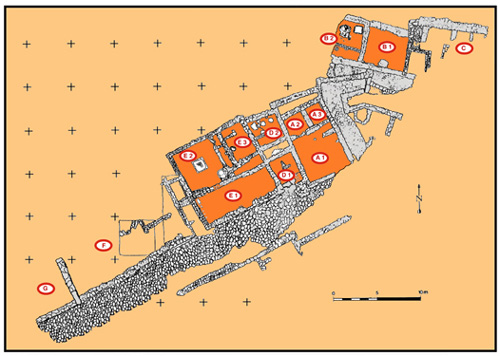The city of Argilos took great benefit from an important economic growth during the 6th and 5th centuries B.C. The citizens of Argilos exploited a region abundant in natural resources. It brought wealth to the city and its inhabitants and led to a conspicuous urbanistic development. The Argilians most surely profited from the exploitation of the Pangeion mines, of forest resources, of slave trading and of commerce with other greek colonies. The population grew and led the city to establish two new colonies, Tragilos, in the thracian heartland and Kerdilion, at the eastern margin of the city’s territory. The colony of Kerdilion held a key position. It was situated on a hill overlooking the Strymona and its inhabitants could thus follow the trading activities along this river.
The systematic excavations which took place on the southeastern slope of the hill of Argilos have uncovered many architectural structures, clarifying the urbanistic development of the city. Here, excavations brought to light a large street, 5 meters wide, which must have led from the port to the acropolis. Buildings, serving public or domestic needs, lined this street. Stone is used for the construction of the exterior walls, whereas the interior ones are built with successive layers of clay, placed on a stone foundation. Some of these buildings are extremely well preserved, with walls up to 4 meters high. This state of preservation helps us understand the way they were built and, thus, enables us to propose realistic reconstructions of the main buildings.

Plan of the southeast sector

View of the southeast sector


